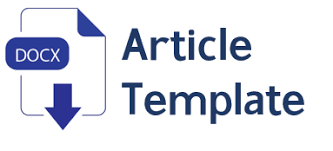Development of MI SOSYS: Eco-Friendly Miniature Solar System as a Bridge for Students to Learn Solar System Materials
Abstract
Miniature solar system props are used to make it easier for teachers to convey material about the Solar System made from materials that are easily found in everyday life by utilizing used goods (eco-friendly) and affordable prices. Learners are directly involved in the use of props such as being able to sort the planets in the Milky Way Galaxy, explain the Rotation-Revolution of the Earth and the Moon, and can even explain the occurrence of Solar and Lunar Eclipses. This research uses the modified Research and Development (R & D) method from Borg and Gall, namely 1. Research, 2. Information gathering, 3. Planning, 4. Initial product development, 5. Validation. The results of the validation were analyzed descriptively qualitatively, resulting in the material expert test and learning effectiveness showing a percentage of 100%, the curriculum expert test showing a percentage of 90%, and the product design expert test showing a percentage of 80%. From the research conducted, it was found that the highest validation results were material aspects and learning effectiveness, while the lowest validation results were product design aspects. Based on the results of this validation, it is feasible to proceed to the next stage, namely the initial product revision.
References
Blumenfeld, P., Soloway, E., Marx, R., Krajcik, J., Guzdial, M., & Palincsar, A. 2009. Motivating project-based learning: Sustaining the doing, supporting the learning, Educational Psychologist, 26: 369-398.
Carnell E & Lodge C (2002), Supporting Effective Learning, London: Paul Chapman
Ministry of Education and Culture (2022). Phase D Learning Outcomes of Natural Science Subjects for Junior High School/Middle School Level.Jakarta: Ministry of Education and Culture
Kulthau, C. C. 2002. Teaching The Library Research. USA: Scarecrow Press Inc.
Mardalis, 1999. Research Methods A Proposal Approach. Jakarta: Bumi Aksara.
Mardiyah, H. S. (2016).Journal of Physics Education, University of Muhammadiyah Makassar Improving Science Learning Outcomes Through Think Pair And Share Cooperative Learning Model for Students. Jpf, 5(C), 25-36.
Mariyatul K. (2020) Making manual teaching aids for teachers of MI Miftahul Ulmum Brangang Klamis. Civitas Ministerium 4(1) 5-9
Novak J D & Gowin D B (1984), Learning How to Learn, Cambridge: Cambridge University Press
Rohani, A. (1997). Use of Educational Instructional Media. Journal of Education and Learning Khatulistiwa, Vol. 2, No., 76.
Rohmawati A. (2015). Learning Effectiveness.Journal of Early Childhood Education 9 (1). 15-32
Saaddiyah, L. I., & Anjarwati, A. (2022). Project Base Learning (PjBL) Model with Augmented Reality (AR) to Increase Creativity of Digital Natives Students. Journal of Physics and Science Learning, 85-92.
Salamah, A. N., Warmi'anah, Setiawan, A. M. 2023. The Use of Props on Earth and Solar System Material to Improve Students' Science Understanding. PENDIPA Journal of Science Education, 7(2): 178-184.
Sari, I. M., Ahmad, S. F., & Amsor. (2019). Improving Science Generic Skills on Solar System Material Through Learning Assisted by Solar System Scope Application for Junior High School Students. Journal of Teaching and Learning Physics, 1-17.
Satria, S. (2018). the use of teaching aids and ipa kits by teachers in learning in several elementary schools in the sub-districts of padang Utara and nanggalo, padang city. 3.Sevti Annisa, I. (2021).
Setyaningsih. H, Wardono, A. Prabowo (2017). The effectiveness of PMRI Approach Aided by Educational Props to Improve Student's Mathematical Literacy. Unnes Journal of Mathematics Education, 6(1), 45-50.
Sevti Annisa, I. (2021). Improving Student Learning Outcomes in Science Learning Using Generative Strategies in Elementary Schools. Journal of Family Education, 1(1), 1-8.
Sepriyanty, (2018). The Use of Props in Science Lessons as an Effort to Improve Learning Outcomes of Fourth Grade Students of SD Negeri 06 Karang Tinggi. Journal of Elementary School Teacher Education 11 (2) 128-134
Siti Maimunah. (2021). The Effectiveness of the Think Pair Share Cooperative Method on Motivation and Learning Outcomes of Grade V Students in Islamic Religion Subjects at SDN Wonokromo I Surabaya. Maimunah, 13(3), 97-104
Sugiyono. 2014. Basics of Marketing Management Concepts, Strategies and Cases, CAPS (Center of Academic publishing service), Yogyakarta.
Swan, K. (2003). Learning effectiveness: what the research tells us. In J. Bourne & J. C. Moore (Eds) Elements of Quality Online Education, Practice and Direction. Needham, MA: Sloan Center for Online Education, 13-45.
Telaumbanua, Y, et al. The Effectiveness of the Use of Props in Mathematics Learning at Elementary School on the Subject of Fractions.Dharmawagsa Journal 14 (4) 709-722
Widyatmoko, A., Pamelasari, S. D. 2012. Project-based learning to develop science teaching aids by utilizing disposable materials. Indonesian Journal of Science Education. 1 (1): 51-56.



